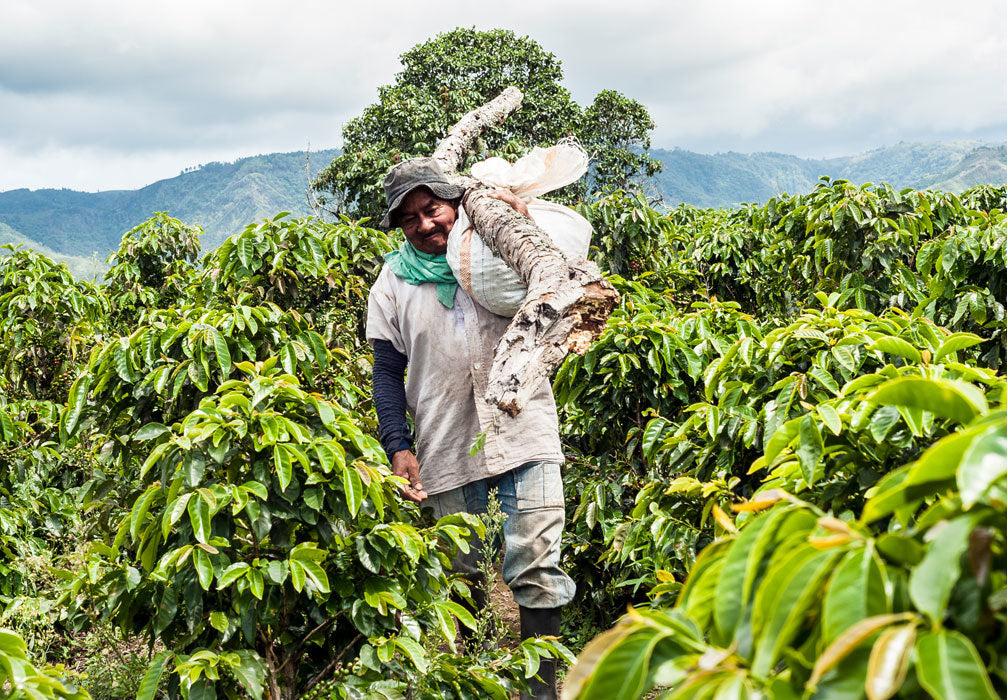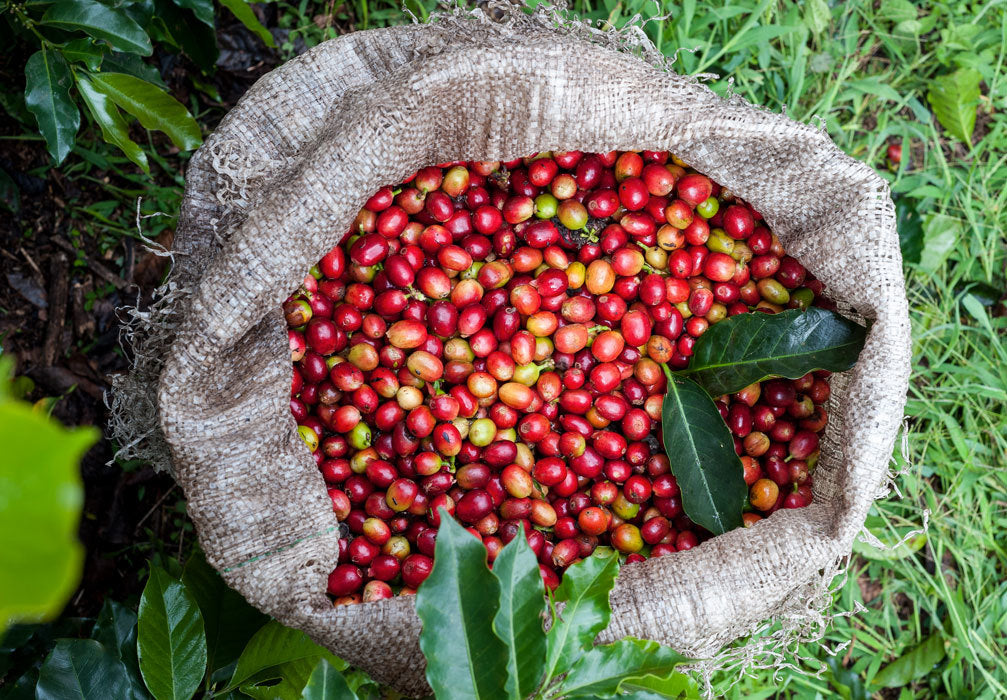What is coffee?
Written by:
Dušan Matičič, head roaster at GOAT STORY
Today we are going to talk about the basics: what is coffee actually? We juggle with the word every day but when we come down to the basics, it actually has several meanings ...
Coffee = a plant.
Coffee = green coffee beans.
Coffee = roasted coffee beans.
Coffee = a beverage.
Here's a video version of this blog post (for those that don't like reading) ...
The coffee plant
Even though you may hear people talking about the coffee tree, it's actually a shrub. It's part of the genus COFFEA with over 100 species known to scientists.
But we, as simpler coffee lovers, are mostly familiar with two: COFFEA ARABICA and COFFEEA CANEPHORA (Robusta). Robusta is only one of the canephora varietals but it's the most common so we use both terms for the same thing.
Most of the specialty coffee world actually only deals with Arabica as the »proper« coffee. And with good reason. Its flavor is smooth and sweet. Robusta on the other hand is harsher and more bitter. There's good reason for that. Arabica is a far more complex plant with 44 chromosomes compared to robusta with only 22.

Worker among coffee plants in Colombia (La Marianela farm)
But there is a downside to that as arabica needs a bit more attention to grow. It usually grows at higher altitudes where temperatures are moderate and it does love to grow in the shade. While robusta is – as the name already tells us – a robust plant that survives harsh conditions. It can grow at low altitudes and can take sunshine with no problems.
But both plants have one thing in common – once a year (sometimes even twice) this shrub will produce beautiful white flowers on the branches. And after these flowers disappear, litlle cherries will grow in their place. And each cherry contains coffee beans!
The coffee bean
Let's get one thing straight – the coffee bean is not a bean. It's a seed. But people do tend to call them beans so let's stick to that.
Bact to the coffee cherry ... when ripe it is usually beautifully dark red. We do know some varieties that are orange, purple or yellow. But most are red. On specialty coffee farms only ripe cherries are picked and unripe are left to ripen. That gives us peak quality of the coffee. It's much like picking apples – ripe apples will taste great while unripe (or overripe) apples will not taste very good.
First of all – a coffee cherry is not a cherry like you're used to. It doesn't taste very nice and it's quite different in structure as well. Inside you'll find two coffee seeds that are facing each other. Sometimes it can happen that there is only one seed inside, we call a coffee bean like that a peaberry. But most cherries have two seeds.

Coffee cherries (La Marianela farm - Colombia)
The seeds are well protected, firstly with a silver skin, a thin layer that you can sometimes still see on roasted coffee. Then there's the hull of the seed, called parchment due to its structure when dried. Then there's the juicy stuff surrounding the seeds – first there's a pectin layer, then the pulp and finally the outer skin of the coffee cherry.
There are different ways of getting the coffee seeds out of the cherry in the phase of coffee processing. The two basic processing methods are dry (also called natural) and wet (also called washed). Natural (or dry) process means that the coffee cherries as a whole are dried and then depulped. Washed (or wet) process means that the cherries are first depulped and washed and then only the coffee seeds are dried.
After the seeds are dried it's time to roast them. There are a lot of changes that happen in a coffee bean during roasting but that's material for another blog post. What we need to know at the moment is - we need to roast the beans in order to prepare coffee in its third iteration – the beverage.
Coffee – the beverage
As a beverage coffee is one of the most commonly consumed drink in the world. And that's no surprise, because it tastes great, right?
There are numerous ways of brewing coffee. In the past, before any fancy gear was invented, people simply crushed the roasted beans, soaked them in hot water and got a cup of coffee. In the modern age we do make things a bit more complicated. These days the most common brewing methods are:
Filter coffee
it can be done automatically or manually (we do prefer that actually).
Espresso
this method needs a special machine to prepare the coffee.
Immersion
This is actually the closest to what people used to do in the past but a bit more sophisticated, because we now use some type of brewing device to filter out the ground coffee from the liquid.
Cold brew
This is a variation of the immersion method where cold water is used instead of hot water. It produces a smooth liqueur like beverage with less acidity and bitterness compared to hot brewed filter coffee.
Ibrik
Ibrik is actually the name of the pot in which coffee is prepared while the method has different names – Turkish coffee, Greeek coffee, Arabic coffee, ... but the method is the same – a mix of super finely ground coffee and water that is heated over a fire or on a stove.
Moka pot
Another stovetop method that is especially popular in Italy where it was invented and it's a method that somewhat mimics the espresso machine (not quite really, but that's what many believe).
Of course there are numerous other brewing methods out there, from syphon, different filter variations, and let's not even open that can of worms that is called the espresso machine.
But bottom line – each and every one of these brewing methods produces a beverage that is exceptional, aromatic, full of flavor and for many people it's the first thing on their mind when they get up in the morning.






